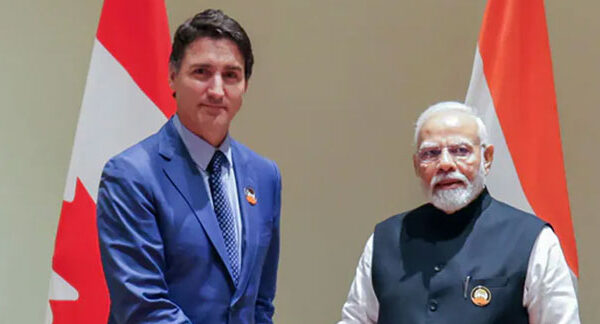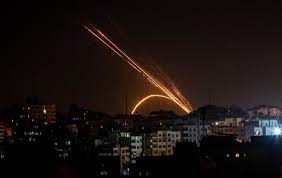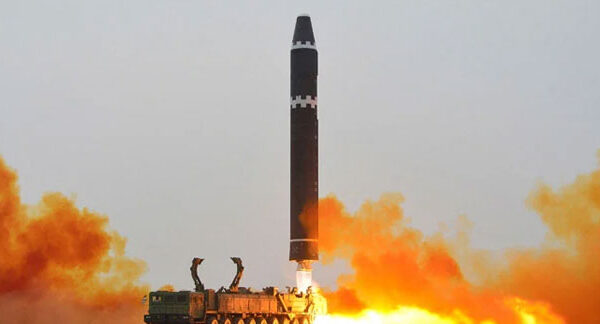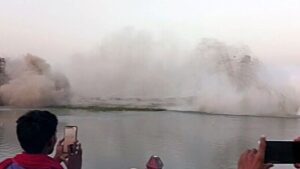India’s Worst Railway Disaster in Over Two Decades: Death Toll Surpasses 300
Tragedy Strikes: Over 288 Lives Lost in India’s Deadliest Rail Accident in Decades
India is reeling from a devastating rail accident that has claimed the lives of at least 288 people, making it the worst such incident in over two decades. The tragedy unfolded when a passenger train derailed and collided with another train in the eastern part of the country. Adding to the catastrophe, one of the trains also struck a parked freight train, resulting in a chaotic scene of wreckage and leaving 803 individuals injured.
KS Anand, the chief public relations officer of the South Eastern Railway, confirmed the death toll of 288, but the number is expected to rise as the rescue operation continues. Reuters witnesses report that bodies remain trapped inside the mangled coaches, intensifying the urgency of the rescue efforts.
Preliminary findings suggest that signal failure was the primary cause of the accident, according to Anand. The Coromandel Express, intended to travel on the main line, was mistakenly directed onto the loop line. This resulted in a collision with the goods train already stationed there, causing the coaches to derail and leading to further chaos when the Howrah Superfast Express was also affected.
Survivor Anubha Das shared his haunting account, describing families crushed, limbless bodies, and a bloodbath on the tracks. The visual evidence captured by video footage reveals the aftermath of derailed train coaches and damaged tracks, with rescue teams working tirelessly to extract survivors and transport them to nearby hospitals.
Heart-wrenching scenes unfolded as people searched desperately for their missing relatives, both at the crash site and in local medical facilities. A makeshift morgue established in a school displayed the grim reality of the situation, with covered bodies placed inside chained bags and police aiding in the identification process.
Prime Minister Narendra Modi visited the scene, engaging with rescue workers and surveying the wreckage. Expressing deep sorrow, he affirmed the government’s commitment to providing all possible assistance to those affected. Via Twitter, he extended his condolences to the grieving families and wished for the speedy recovery of the injured.
Eyewitnesses described the enormity of the tragedy, highlighting the large number of lives lost. Those involved in rescue operations shared their distressing experiences, recounting the cries and wails of the injured and grieving relatives. The gravity of the situation is clear, leaving a lasting impact on those who witnessed the horrific event.
Railway Minister Ashwini Vaishnaw announced compensation measures, with families of the deceased to receive 1 million rupees ($12,000). The seriously injured will be granted 200,000 rupees, while minor injuries will receive 50,000 rupees. Several state governments have also pledged additional compensation for the victims.
Early on Saturday, authorities were seen removing bodies covered in white cloths from the railway tracks, as captured in Reuters video footage. Survivors recalled the terrifying moment when they were abruptly awakened by the noise of the train derailing, witnessing the devastating aftermath of the tragedy.
The collision occurred on Friday around 7 PM (1330 GMT) when the Howrah Superfast Express traveling from Bengaluru to Howrah collided with the Coromandel Express en route from Kolkata to Chennai.
In response to the catastrophe, an extensive search-and-rescue operation involving hundreds of fire department personnel, police officers, and sniffer dogs has been launched. National Disaster Response Force teams are also present at the site, working tirelessly to provide aid and support.
Demonstrating solidarity, hundreds of young people lined up outside a government hospital in Odisha’s Soro to donate blood on Friday.
India’s railway network, which transports over 13 million people daily, has faced safety concerns due to aging infrastructure. The recent accident underscores the pressing need for comprehensive safety measures and infrastructure upgrades to ensure








